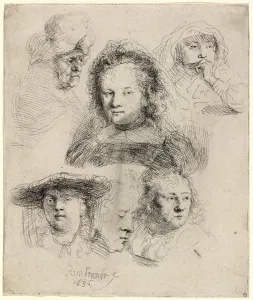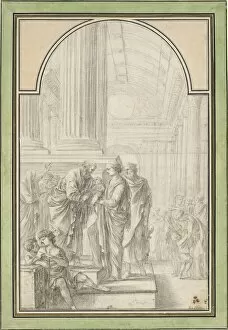1606 Collection (page 10)
"Exploring the World of 1606: A Glimpse into Rembrandt's Era" Step back in time to the year 1606, a period filled with intrigue and artistic brilliance
All Professionally Made to Order for Quick Shipping
"Exploring the World of 1606: A Glimpse into Rembrandt's Era" Step back in time to the year 1606, a period filled with intrigue and artistic brilliance. Dutch painter Rembrandt van Rijn, born in this very year, would go on to become one of history's most celebrated artists. His masterpiece "A Man in Armour, " painted in 1655, showcases his exceptional talent for capturing human emotion on canvas. Meanwhile, another work by Rembrandt from 1641 takes us to the Dutch countryside with "The Windmill. " This etching transports us to a simpler time when windmills dotted the landscape and served as symbols of industry and innovation. As we delve further into this era, a map of Europe from the 17th century reveals a continent undergoing significant political changes. It was during these times that conspirators plotted against kings and queens – such as those involved in the infamous Gunpowder Plot of 1605. Across the Atlantic Ocean lies an entirely different world depicted on a map from that same century. The New World beckons explorers with its vast unknown territories waiting to be discovered. Fast forward centuries later, we encounter locomotive No. 1606 coupled to an ambulance train during World War II. This powerful machine symbolizes progress and resilience amidst challenging times. Returning once again to artistry, we find Rembrandt immortalizing himself through self-portraits like "REMBRANDT / LIZ 1906 Self portrait. " These introspective works allow us glimpses into his personal life and creative process. Traveling eastward brings us face-to-face with Japan through Jodocus Hondius' engraved map created for Gerardus Mercator's Atlas edition of 1606. Here we witness how cartography shaped our understanding of distant lands while revealing Korea as an island – reflecting historical perceptions at that time.














